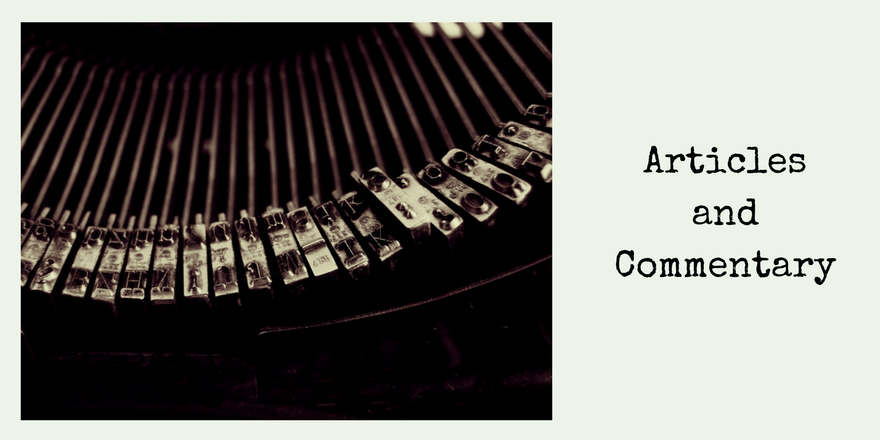Science Fiction and Fantasy
American Military University
Robbie by Isaac Asimov was an entertaining and thought-provoking story. In particular, it leaves the reader with the question of what constitutes life and sentience. In the case of the robot named Robbie, that question is easy to answer. As a manufactured entity consisting of metal and plastic, Robbie is clearly not human, but that doesn?t rule out his possible status as a sentient being. On the other hand, Robbie can express emotions, which would normally signal some form of sentience, or in the very least, advanced programming. As Weston mentions in the story, Robbie exists for one purpose, ?to be the companion of a little child.? Further, he mentions that Robbie was ?made? to be ?faithful and loving and kind.? Had Robbie?s expression of emotions been the result of a transcendence of his programming rather than as a direct result, I would agree he was ?alive.? However, Robbie was simply acting out his programming, and not necessarily making decisions that would indicate the presence of free will. In short, he is no more alive than my Buick LeSabre. For an excellent example of this point, watch the Robin Williams film Bicentennial Man.
I enjoyed revisiting Ray Bradbury?s classic story There Will Come Soft Rains. This highly descriptive story could also give some readers the false impression of sentience on behalf of the story?s central character – the house. In this post-nuclear holocaust setting, an automated house continues to act out its programming by performing its everyday tasks. However, far from being alive, this house is simply conducting itself as it was instructed via its programming prior to the nuclear devastation that killed its occupants. This is a clear case of a computerized house, opposed to a sentient, living entity.
The Long Watch by Robert A. Heinlein was one of my favorite of the assigned readings. This was a Heinlein story that had somehow eluded my ?read everything Heinlein has ever written radar.? First off, how often does a lieutenant get to openly defy a colonel and end up declared a hero? Not often enough in my opinion. Second, the irony of the story is that a man trained in nuclear science and the maintenance and manufacture of nuclear weapons would end up being the same man who saved the world from the horrors of nuclear war. The subtle irony of this excellent story was not immediately obvious to me. At least not until I began to look at the assigned discussion points for this journal entry.
Arthur C. Clarke?s The Sentinel was familiar as I?d read both it and 2001: A Space Odyssey several years prior. I?ve always found the theme of visitors from beyond leaving an ancient interstellar calling card to be of great interest. The very idea that we aren?t alone in the galaxy, let alone the universe is both exciting and frightening. It?s the X factor of whether such visitors would be friend or foe that is the issue. Of course, there is also the added possibility that such visitors would have become extinct or evolved so far past our understanding that any meaningful contact would be out of reach. The possibilities presented in writings such as The Sentinel help alleviate the loneliness of human existence in the universe.
Harrison Bergeron is another of my favorite short stories. In this popular Kurt Vonnegut tale, an authoritarian government forces exceptional individuals to physically restrain and alter their gifts and talents in order to promote a false sense of equality in society. By forcing everyone to adjust downward, the lowest of abilities are inappropriately elevated, stifling the liberty and creativity of all members of society. This theme has also appeared in other forms, most notably in the Rush song The Trees. The damage such a policy would do to society and individual rights would be immeasurable. By contrast, a similar government policy that brought all members of a society up to the highest levels of ability would be equally devastating, but in a different manner. While appearing less coercive, such a policy would still stifle creativity and would equally affect individual liberty were it implemented by government force, rather than individual choice.
Frederik Pohl?s The Fiend was a disturbing story of punishment and the depths of human depravity. The lead character, Dandish, was the solitary pilot and crew of a starship of cryogenically stored colonists bound for a distant star system. Through the short pages of Pohl?s brilliantly crafted story, it becomes obvious that Dandish is a convicted predator and a miserable example of humanity. Eventually we learn than Dandish, while still human, is present on the starship via his brain only. The rest of his miserable physical form has been cryogenically stored on Mercury.
The Jigsaw Man, a story from Larry Niven, is an excellent model of hard science fiction and yet another example of authoritarian government in action. Niven?s future, as presented in The Jigsaw Man, is a world where even the smallest of legal infractions can cost a person their life. A condemned individual in this society will suffer a fate that involves the use of medical science to execute, dissect and extract their organs for transplant purposes. Further cementing this story?s place in the hard science subgenre was one character?s use of a medically inserted bomb to commit suicide rather than suffer the fate of becoming an involuntary organ donor. Finally, the use of hypersonic sound waves to subdue suspects and convicts was another example of this story?s implementation of the hard science subgenre.
James Tiptree?s story The Last Flight of Dr. Ain is a interesting mix of metaphor and catastrophe. The title character of Dr. Ain is a world renowned biologist who intentionally develops a mutated strain of leukemia that will quickly decimate the world?s human population. Ain then proceeds to fly to multiple spots around the globe, making sure to spread his viral contagion at each stop on his convoluted journey to an internationl conference in Moscow. Mother Nature or the environment, however one chooses to view her, appears in this story in the form of a beautiful woman in Dr. Ain?s early years only to reappear diseased and ailing later as a result of human carelessness and runaway population growth. This tale was an interesting and disturbing example of science fiction and metaphor.

